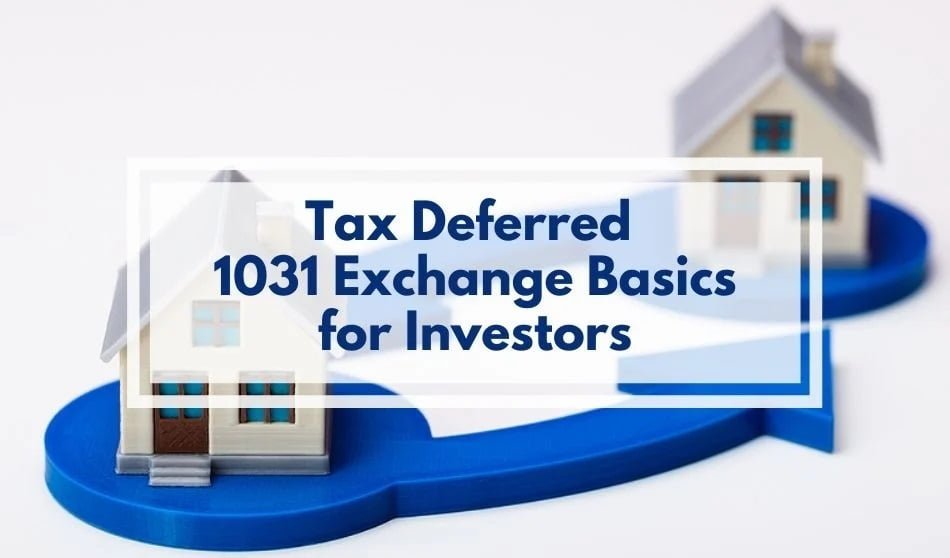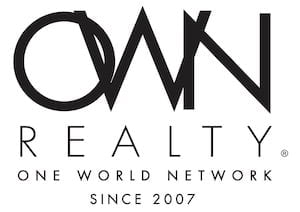
For real estate investors, the 1031 exchange is a powerful tool that can unlock a world of opportunities while deferring capital gains taxes. In this comprehensive guide, we explore the ins and outs of the 1031 exchange for real estate investors, providing insights, tips, and essential information for those looking to leverage this tax-deferral strategy to optimize their real estate portfolios.
This tax-deferral strategy offers an array of advantages, allowing investors to sell an existing property and reinvest the proceeds into a like-kind property, all while deferring capital gains taxes. The allure of the 1031 exchange is not only the substantial tax savings it offers but also the potential it provides for unlocking a world of investment opportunities for real estate investors. Whether you’re a seasoned investor looking to upgrade your portfolio or a novice aiming to maximize your returns, understanding the intricacies of the 1031 exchange is vital.
The foundation of a successful 1031 exchange begins with a solid grasp of the basics, including eligibility criteria, IRS regulations, and the essential role of qualified intermediaries. To qualify for a 1031 exchange, properties must be held for investment or income-producing purposes, and they should be similar in nature. While primary residences and properties primarily used for personal enjoyment, such as vacation homes, are ineligible for 1031 exchanges, a diverse range of real estate assets can participate in this tax-deferral strategy for real estate investors.
1031 Exchange for Real Estate Investors

The presence of a qualified intermediary is pivotal in ensuring that the exchange adheres to IRS regulations, as they facilitate the entire process, from the sale of the relinquished property to the acquisition of the replacement property. As investors navigate the 45-day identification period and the subsequent 180-day exchange period, they must exercise diligence and work closely with their qualified intermediary to meet these critical deadlines. Beyond the regulatory nuances, a significant draw of 1031 exchanges is the opportunity to achieve substantial tax savings and continue building wealth through portfolio growth.
With strategies like portfolio diversification, income enhancement, and tax efficiency, investors can leverage this mechanism to align their real estate investments with their financial objectives, all while preserving and reinvesting their funds. Whether you’re pursuing a like-kind exchange for residential rental properties or transitioning to income-generating commercial assets, the 1031 exchange empowers you to make informed decisions and bolster the long-term growth of your real estate investment portfolio.
1031 Exchange for Real Estate Investors
I. The Basics of a 1031 Exchange
A 1031 exchange, also known as a like-kind exchange, is a tax-deferral strategy permitted by the Internal Revenue Service (IRS). Real estate investors can use this strategy to sell one property and reinvest the proceeds in another similar property while deferring capital gains taxes. It’s crucial to understand that this tax-deferral mechanism is not a tax exemption; it merely postpones the tax liability until a future sale of the replacement property.
II. Eligible Properties for 1031 Exchanges
To benefit from a 1031 exchange, investors must hold the properties involved for investment, business, or income-producing purposes. These can include various real estate assets such as commercial buildings, residential rental properties, vacant land, and more. It’s important to note that primary residences and properties held primarily for personal use, like vacation homes, do not qualify for 1031 exchanges.
III. The Role of Qualified Intermediaries
In a 1031 exchange, the involvement of a qualified intermediary is crucial. A qualified intermediary (QI) is a neutral third party responsible for facilitating the exchange. They handle the sale of the relinquished property, hold the proceeds in a segregated account, and assist in acquiring the replacement property. This intermediary helps ensure that the exchange adheres to IRS regulations, maintaining the tax-deferral benefits for the investor.
IV. The 45-Day Identification Period
One of the critical aspects of a 1031 exchange is the 45-day identification period. Within 45 days of selling the relinquished property, the investor must identify potential replacement properties in writing. The identification must adhere to IRS guidelines, specifying the properties with sufficient detail to avoid any ambiguity. This period is a fundamental step in the exchange process and requires careful consideration by investors.
V. The 180-Day Exchange Period
Following the identification of potential replacement properties, investors have a total of 180 days to complete the exchange. This timeframe encompasses both the 45-day identification period and an additional 135 days. It’s vital to understand these deadlines and work closely with your qualified intermediary to ensure a seamless transaction within the designated timeframe.
VI. The Tax Benefits of a 1031 Exchange
One of the primary attractions of a 1031 exchange for real estate investors is the potential for significant tax savings. By deferring capital gains taxes, investors can preserve and reinvest their funds, allowing for portfolio growth and wealth accumulation. This tax-deferral strategy can be especially advantageous when upgrading to higher-value properties or transitioning into properties with increased income potential.
VII. Strategies for Real Estate Investors
Real estate investors can employ various strategies to maximize the benefits of a 1031 exchange. These strategies include portfolio diversification, income enhancement, and tax efficiency. By carefully selecting replacement properties and aligning them with their investment objectives, investors can create a comprehensive real estate investment strategy that optimizes their financial outcomes.
VIII. Expert Guidance and Professional Advice
Given the complexity and regulatory requirements of 1031 exchanges, real estate investors are advised to seek expert guidance and professional advice. Qualified intermediaries, tax advisors, and legal professionals can provide invaluable support throughout the exchange process, ensuring compliance with IRS regulations and the successful execution of the transaction.
IX. Special Considerations for 1031 Exchanges
Navigating Unique Situations
This section explores special scenarios and considerations for 1031 exchanges, including reverse exchanges, improvement exchanges, and multi-property exchanges. Understanding these specialized options can open up even more opportunities for real estate investors.
X. The Financial Benefits of Deferring Taxes
Building Wealth through Tax Deferral
Delve into the financial benefits of deferring taxes through 1031 exchanges. Discover how tax deferral can lead to portfolio growth, increased cash flow, and wealth preservation for real estate investors.
XI. Potential Pitfalls and How to Avoid Them
Steering Clear of Common Missteps
This section discusses potential pitfalls and challenges that investors might encounter during a 1031 exchange. Learn how to recognize and avoid these obstacles to ensure a successful transaction.
XII. Real-Life Success Stories
Inspiring Investment Journeys
Explore real-life success stories of investors who have used 1031 exchanges to achieve their financial goals and optimize their real estate portfolios. These stories offer inspiration and insights for those considering this strategy.
XIII. The Future of 1031 Exchanges
Evolving Regulations and Outlook
Stay informed about the future of 1031 exchanges, including potential changes in regulations and the evolving landscape of tax-deferral strategies for real estate investors. Understanding the trajectory of this strategy is essential for long-term planning.
1031 Exchange for Real Estate Investors
You must read and remember all the 1031 Exchange for Real Estate Investors rules and follow those. For real estate investors, the 1031 exchange for real estate investors is a versatile and powerful tool for preserving wealth and optimizing investment portfolios. This tax-deferral strategy offers an array of advantages, allowing investors to sell an existing property and reinvest the proceeds into a like-kind property, all while deferring capital gains taxes. The allure of the 1031 exchange for real estate investors is not only the substantial tax savings it offers but also the potential it provides for unlocking a world of investment opportunities. Whether you’re a seasoned investor looking to upgrade your portfolio or a novice aiming to maximize your returns, understanding the intricacies of the 1031 exchange for real estate investors is vital.
The foundation of a successful 1031 exchange for real estate investors begins with a solid grasp of the basics, including eligibility criteria, IRS regulations, and the essential role of qualified intermediaries. To qualify for a 1031 exchange for real estate investors, properties must be held for investment or income-producing purposes, and they should be similar in nature. While primary residences and properties primarily used for personal enjoyment, such as vacation homes, are ineligible for 1031 exchanges, a diverse range of real estate assets can participate in this tax-deferral strategy.
The presence of a qualified intermediary is pivotal in ensuring that the exchange for real estate investors adheres to IRS regulations, as they facilitate the entire process, from the sale of the relinquished property to the acquisition of the replacement property. As investors navigate the 45-day identification period and the subsequent 180-day exchange period, they must exercise diligence and work closely with their qualified intermediary to meet these critical deadlines.
Beyond the regulatory nuances, a significant draw of 1031 exchanges for real estate investors is the opportunity to achieve substantial tax savings and continue building wealth through portfolio growth. With strategies like portfolio diversification, income enhancement, and tax efficiency, real estate investors can leverage this mechanism to align their real estate investments with their financial objectives, all while preserving and reinvesting their funds.
Whether you’re pursuing a like-kind exchange for residential rental properties or transitioning to income-generating commercial assets, the 1031 exchange empowers real estate investors to make informed decisions and bolster the long-term growth of their real estate investment portfolio. This tax-deferral strategy serves as a cornerstone for real estate investors seeking to optimize their real estate portfolios, and its flexibility, potential tax benefits, and adaptability to various investment scenarios make it a valuable tool for wealth preservation and growth.
Conclusion
The 1031 exchange offers a potent strategy for real estate investors seeking to defer capital gains taxes while optimizing their investment portfolios. By understanding the basics, adhering to IRS regulations, and working with qualified intermediaries and professionals, investors can harness the full potential of the 1031 exchange to achieve their financial goals and secure the long-term growth of their real estate investments. This tax-deferral strategy empowers investors to make informed decisions, enhance their income, and build a resilient and tax-efficient real estate portfolio.

 Call us today:
Call us today: